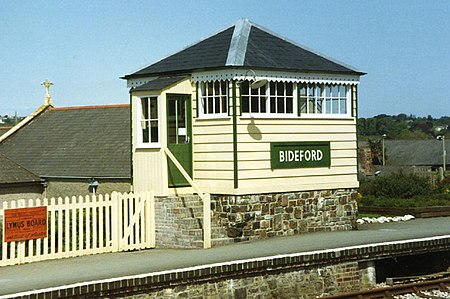Bideford Railway Heritage Centre
BidefordBuildings and structures in BidefordHeritage railways in DevonMuseums in DevonRailway museums in England ... and 1 more
Use British English from December 2016

The Bideford Railway Heritage Centre CIC (previously the Bideford and Instow Railway Group) in Devon, England is a community interest company that is responsible for the management of the site of Bideford railway station. The company is also responsible for Instow signal box which opens on occasional Sundays and bank holidays from Easter to October.
Excerpt from the Wikipedia article Bideford Railway Heritage Centre (License: CC BY-SA 3.0, Authors, Images).Bideford Railway Heritage Centre
Stanbridge Park, Torridge District
Geographical coordinates (GPS) Address Nearby Places Show on map
Geographical coordinates (GPS)
| Latitude | Longitude |
|---|---|
| N 51.019444444444 ° | E -4.2263888888889 ° |
Address
Stanbridge Park
Stanbridge Park
EX39 3RS Torridge District
England, United Kingdom
Open on Google Maps









